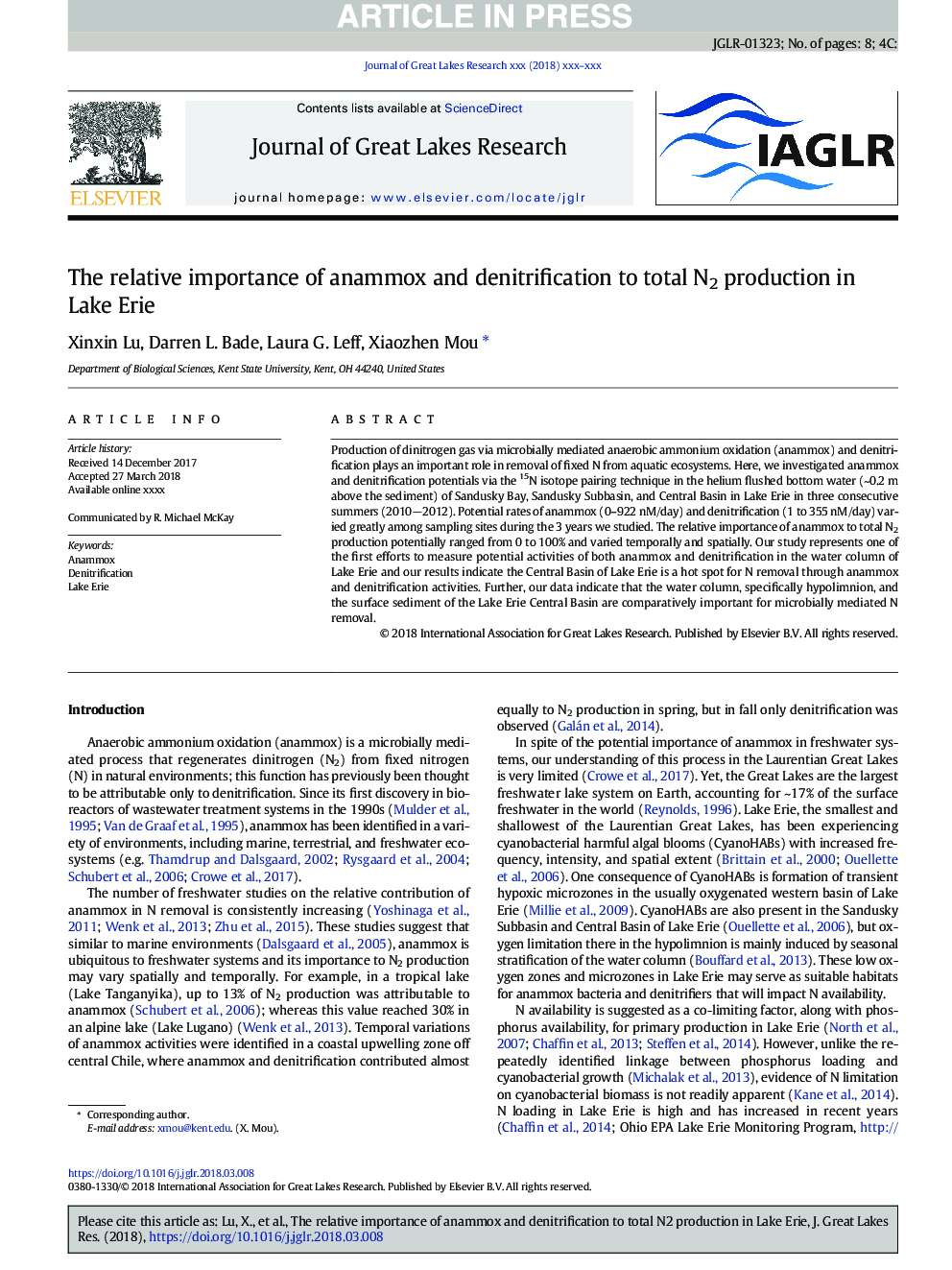| Article ID | Journal | Published Year | Pages | File Type |
|---|---|---|---|---|
| 8849107 | Journal of Great Lakes Research | 2018 | 8 Pages |
Abstract
Production of dinitrogen gas via microbially mediated anaerobic ammonium oxidation (anammox) and denitrification plays an important role in removal of fixed N from aquatic ecosystems. Here, we investigated anammox and denitrification potentials via the 15N isotope pairing technique in the helium flushed bottom water (~0.2Â m above the sediment) of Sandusky Bay, Sandusky Subbasin, and Central Basin in Lake Erie in three consecutive summers (2010â2012). Potential rates of anammox (0-922Â nM/day) and denitrification (1 to 355Â nM/day) varied greatly among sampling sites during the 3Â years we studied. The relative importance of anammox to total N2 production potentially ranged from 0 to 100% and varied temporally and spatially. Our study represents one of the first efforts to measure potential activities of both anammox and denitrification in the water column of Lake Erie and our results indicate the Central Basin of Lake Erie is a hot spot for N removal through anammox and denitrification activities. Further, our data indicate that the water column, specifically hypolimnion, and the surface sediment of the Lake Erie Central Basin are comparatively important for microbially mediated N removal.
Keywords
Related Topics
Physical Sciences and Engineering
Earth and Planetary Sciences
Earth and Planetary Sciences (General)
Authors
Xinxin Lu, Darren L. Bade, Laura G. Leff, Xiaozhen Mou,
